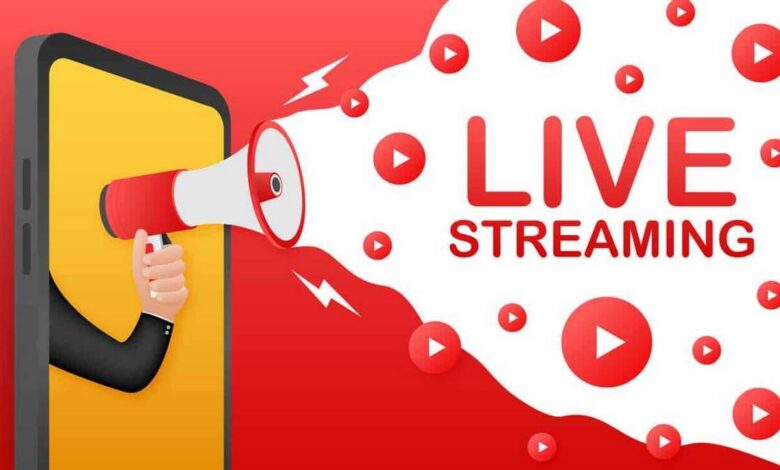Exploring the Best Live Streaming Platforms for Professional Use

In this article, we will explore the dynamic world of live streaming platforms, tailored for the professionals who demand the best in connectivity, quality, and features. For seamless live streaming, you also need live streaming software and a live streaming server.
Live streaming software is an application or platform that enables you to broadcast live video and audio over the internet. And, live streaming server is a special type of server that is designed to broadcast real-time video and audio content over the internet. Both of these play an important role in enabling live streaming technology. This concise guide will spotlight several top-tier options, each with its own unique strengths, catering to a diverse array of professional needs.
So without further ado, let’s talk about the best live streaming platforms out there,
1. Dacast
Dacast is a comprehensive live streaming and video hosting platform offering high-quality, secure broadcasting solutions. It’s designed for businesses and professionals, providing a white-label service that enables customization and branding of video content.
The platform supports both live and on-demand video, equipped with features like analytics, monetization options, and 24/7 support. However, its professional-grade services come at a price, making it less accessible for casual users or those just starting out.
2. Vimeo Live
Vimeo Live, part of Vimeo’s broader video platform, offers high-quality live streaming with a focus on production value and viewer experience. It provides creators and businesses with tools for broadcasting in up to 4K resolution, along with features like live chat, audience analytics, and video editing.
Vimeo Live is aimed at those who prioritize video quality and professional-grade streams. However, its advanced features and focus on quality come with a cost, potentially making it less suitable for casual users or those with tight budgets.
3. VdoCipher
VdoCipher offers a live streaming platform aimed at course creators, event organizers, and broadcasters, ensuring smooth global playback. It’s easily integrable within websites or apps and supports real-time viewer interaction through both anonymous and authenticated chat options.
The platform is scalable up to 100,000 viewers in a single session and leverages AWS infrastructure for full HD playback. Features include automatic recording, compatibility with OBS and other tools, and up to five parallel streams from a single account.
4. IBM Cloud Video
IBM Cloud Video, designed for enterprises, offers scalable live streaming services enriched with features like AI-driven insights for enhanced viewer engagement, automatic closed captioning for accessibility, and high-level security measures for data protection.
It supports a broad range of use cases, from event broadcasting to educational content delivery. While its advanced functionalities cater well to large organizations, they may present a complexity barrier for smaller entities or individuals.
5. Twitch
Twitch is a live streaming platform primarily known for gaming content. It allows streamers to broadcast their gameplay, interact with viewers in real-time via chat, and build a community.
Beyond gaming, Twitch hosts streams related to music, art, talk shows, and more. Its interactive features and dedicated audience make it a vibrant platform for engaging content. However, it’s highly competitive, requiring streamers to work hard to stand out.
6. YouTube Live
YouTube Live, part of the broader YouTube platform, allows users to live stream to a wide audience, leveraging YouTube’s vast user base. It supports high-quality streaming, real-time interaction with viewers through chat, and offers robust monetization tools.
While it provides significant reach and visibility, the platform’s competitiveness requires content creators to employ strategies to stand out. YouTube Live is ideal for those looking to expand their audience and engage with viewers in a dynamic, interactive format.
7. Facebook Live
Facebook Live integrates seamlessly into the Facebook ecosystem, making it easy for users to live stream directly to their friends and followers. It’s particularly popular for its accessibility and the ability to reach a pre-existing audience instantly.
The platform supports real-time interaction through comments, making streams more engaging. However, visibility can be affected by Facebook’s changing algorithms, and there are concerns around privacy and data handling.
8. Instagram Live
Instagram Live allows for real-time video streaming within the Instagram app, fostering a direct, intimate connection between users and their followers. It supports interactive features like live comments and reactions, making it ideal for influencers and brands aiming for engagement.
Streams disappear after they end, promoting spontaneity but limiting content longevity. Instagram Live suits those looking for a casual, personal way to connect with an audience on a platform they already use daily.
9. Brightcove
Brightcove is a comprehensive video platform offering solutions for live streaming, video hosting, and monetization. It’s designed for businesses looking to leverage video for marketing, communication, or content delivery.
The platform provides high-quality streaming, extensive analytics, and strong security features. Brightcove is ideal for organizations needing a professional-grade video service, but it may be more complex and costly than solutions geared towards casual or individual creators.
10. Cisco Webex
Cisco Webex is a video conferencing and online meeting platform that also offers live streaming capabilities. It’s designed for businesses and organizations to facilitate collaboration, webinars, and large-scale online events. Webex supports features like screen sharing, real-time interaction through chat, and high-definition video. It’s suited for professional settings, focusing on reliability and security, but may not be the first choice for casual live streamers or content creators looking for a more audience-engagement-centric platform.
Each platform brings something unique to the table, whether it’s high-definition streaming, specialized features for interactive events, or the ability to reach vast audiences with ease. Choosing the right platform depends on your specific goals, audience, and content type. Embrace the power of live streaming and take your digital presence to new heights!